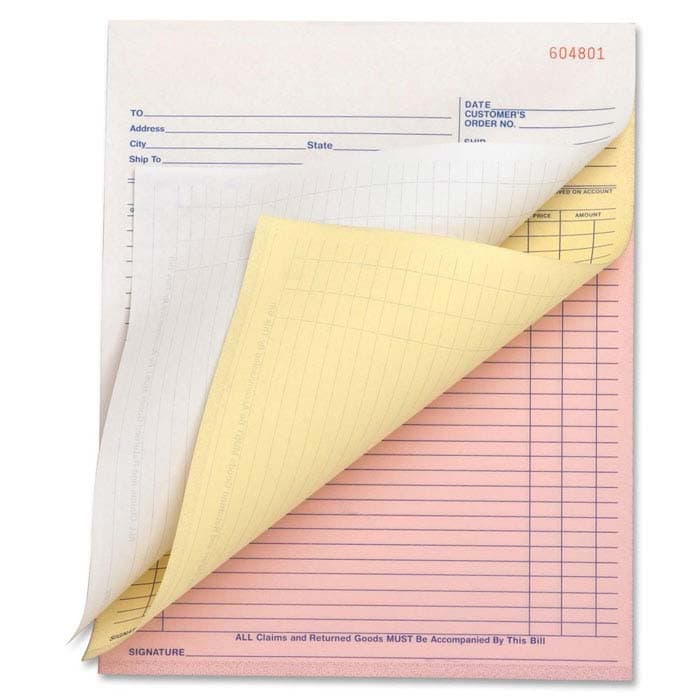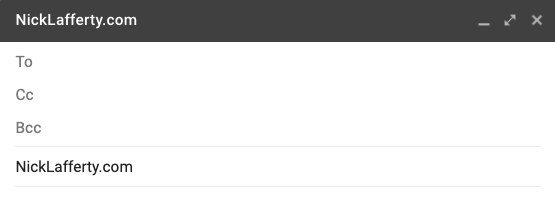I’ve been sending emails since Gmail was first released as a beta product in 2004.
Since then I’ve graduated from high school, college, graduate school, and have been working professionally for almost the last 10 years.
I’ve sent a lot of email.
I even worked at Mailgun, a company that sends 10+ billion emails a month for companies like Pinterest and Substack.
But for a while I wasn’t clear on the difference between CC and BCC.
When should I use CC over BCC?
I’ll answer all of your CC and BCC questions.
But before you go on, make sure to check out my list of best email clients.
What is CC in Email? CC Email Meaning

CC stands for carbon copy, which means the recipients of your email can see who else was copied on the email and will continue to receive emails until they’re removed from CC.
CC is a way to permanently copy someone on all emails in the chain.
At work, I most often CC my boss or other colleagues that should be notified of an email.
People who are CC’d on emails will stay CC’d until removed. BCCs on the other hand will be dropped from all future emails.
One of my professional goals this year is to improve my upward communication.
CC’ing my boss is a way to do that, but only at appropriate times. You don’t need to CC everyone for every email.
And please don’t be that person who reply-alls to a company-wide email for the Christmas Party this year.
What is BCC in Email? BCC Email Meaning

BCC stands for blind carbon copy, which means the recipients of your email cannot see who else was BCC’d and they will not continue to receive emails.
BCC is a way to temporarily copy someone on one email in the chain.
BCC is a great way to keep someone in the loop without expecting a response from them.
Important note: BCC’d recipients are dropped from all future replies, so people BCC"d on an email won’t receive any more emails on that chain.
They won’t know if someone respond to an email they were BCC’d on.
If I am BCC’d on an email I take that to mean someone wanted to keep me updated on a project but doesn’t require my input.
I often BCC my boss on important emails as an FYI.
The History of CC and BCC
CC and BCC originate when actual paper, in this case carbon copy paper, was used to write receipts.

Carbon copy paper typically has three layers. The first sheet is white, the second sheet is yellow, and the last sheet is pink.
Writing on the top layer copies everything to the bottom two layers.
As early as the 1950s, blind carbon copy was introduced as a way to send a letter to someone without noting the blind recipient on the original copy.
Letters were often addressed to three sets of groups:
- The primary group: who the letter was addressed to
- The secondary group: other interested parties, aka CC on emails
- The tertiary group: hidden parties, aka BCC on emails
Why would you use BCC instead of CC?
BCC is best used when you want someone to only see your email but none of the further responses.
An example would be receiving an introduction from someone through email. Your friend John introduces you to Abby. When you respond to the email you should move John to BCC (and thank him!) and move abby to the To field. That way John knows you connected with Abby but he won’t be bothered by your continued correspondence.
You can also use BCC to make someone aware of your response without the other party knowing. For example, you receive an email that you want your boss to know about. You can reply to the email and BCC your boss – the person who emailed you initially won’t see the BCC but your boss will be silently looped in.
Which is better CC or BCC?

CC and BCC in emails both have their place.
In general, CC is better because the recipients will always be copied on future emails. BCC is better for one-off exchanges when the person BCC’d only needs to see one part of the email chain.
One caveat with CCing someone is they can’t easily remove themselves, so be careful who you CC because it means signing them up to receive every email in the chain.
I use CC 90% of the time and BCC about 10% of the time.
Is BCC really hidden?
Yes, BCC is hidden. Anyone on the email chain cannot see who has been BCC’d. Anyone included in a BCC cannot see anyone else on the BCC list either.
Today I sent an email to many recipients and I didn’t want them to see each others emails. So I added them all as BCC them.
Can Recipients in BCC see each other?
No, recipients in BCC cannot see each other.
What happens if someone replies to a BCC email?
The initial sender of that email, and anyone CC’d, will get the reply, but anyone else who was BCC’d will not receive the reply.
Inbox providers like Microsoft will even display a message:
Your address was hidden when this message was sent. If you Reply All, everyone will now you received it.
Can you send an email with only BCC?
No, your email must always include a recipient.
CC vs BCC: Wraping Up
I hope this was a helpful overview on the differences between CC and BCC.
It’s pretty straight forward once you understand when to use them both.
I recommend most people use CC over BCC the majority of the time.
And hey, while you’re here don’t forget to check out my list of the best notion templates
